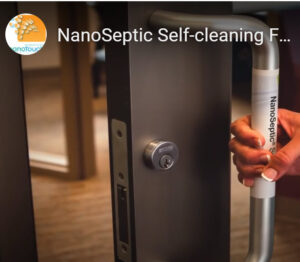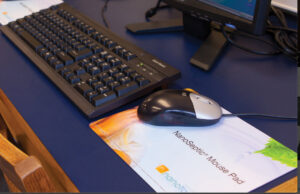Project moving ahead to beat reopening of Campuses and Centers and deal with Covid-19
 Yavapai Community College is moving ahead quickly to achieve its goal of becoming a “touchless campus.” The goal is to help prevent the spread of Covid-19 among students, staff, faculty and visitors.
Yavapai Community College is moving ahead quickly to achieve its goal of becoming a “touchless campus.” The goal is to help prevent the spread of Covid-19 among students, staff, faculty and visitors.
Listed below are some of the efforts being made as described by Scott Blevins, the Facilities Manager, Plant & Process Engineer.
- Restrooms with doors that pull inward now have a foot pull if you would like to avoid touching the handle.
- Approximately 75% of toilet and urinal flush valves are now touchless.
- Touchless faucet installation is just getting underway.
- Touchless paper towel dispensers are due in July and installation will start shortly after arrival.
- Hand sanitizer stations are slowly coming in and will start getting installed over the next few weeks, starting with locations that have in-person classes planned for the fall semester.
- Purchasing some of the first continuously Self-Cleaning Surface products for various applications including:
- NanoSeptic door handle wraps for entrances at high use public buildings.
- NanoSeptic touch screen covers for spaces that are open in the fall.
- NanoSeptic mouse pads
According to Mr. Bevens, the College “approved the ordering and installation of NanoSeptic Self-Cleaning Surface  products for various applications. We are purchasing door handle wraps for entrances at high use public buildings, touch screen covers for spaces that are open in the fall, and mousepads for the computer commons and libraries. “NanoSeptic Skins and Mats turn dirty, high traffic, public touchpoints into continuously self-cleaning surfaces. Powered by light, NanoSeptic surfaces utilize mineral nanocrystals, which create a powerful oxidation reaction. Working 24/7, the surface continually oxidizes organic contaminants. Unlike traditional disinfectants and cleaners, the NanoSeptic surface uses no poisons, heavy metals or chemicals, and nothing is released from the surface since the nano-crystals are molecularly bonded to the material.”
products for various applications. We are purchasing door handle wraps for entrances at high use public buildings, touch screen covers for spaces that are open in the fall, and mousepads for the computer commons and libraries. “NanoSeptic Skins and Mats turn dirty, high traffic, public touchpoints into continuously self-cleaning surfaces. Powered by light, NanoSeptic surfaces utilize mineral nanocrystals, which create a powerful oxidation reaction. Working 24/7, the surface continually oxidizes organic contaminants. Unlike traditional disinfectants and cleaners, the NanoSeptic surface uses no poisons, heavy metals or chemicals, and nothing is released from the surface since the nano-crystals are molecularly bonded to the material.”
